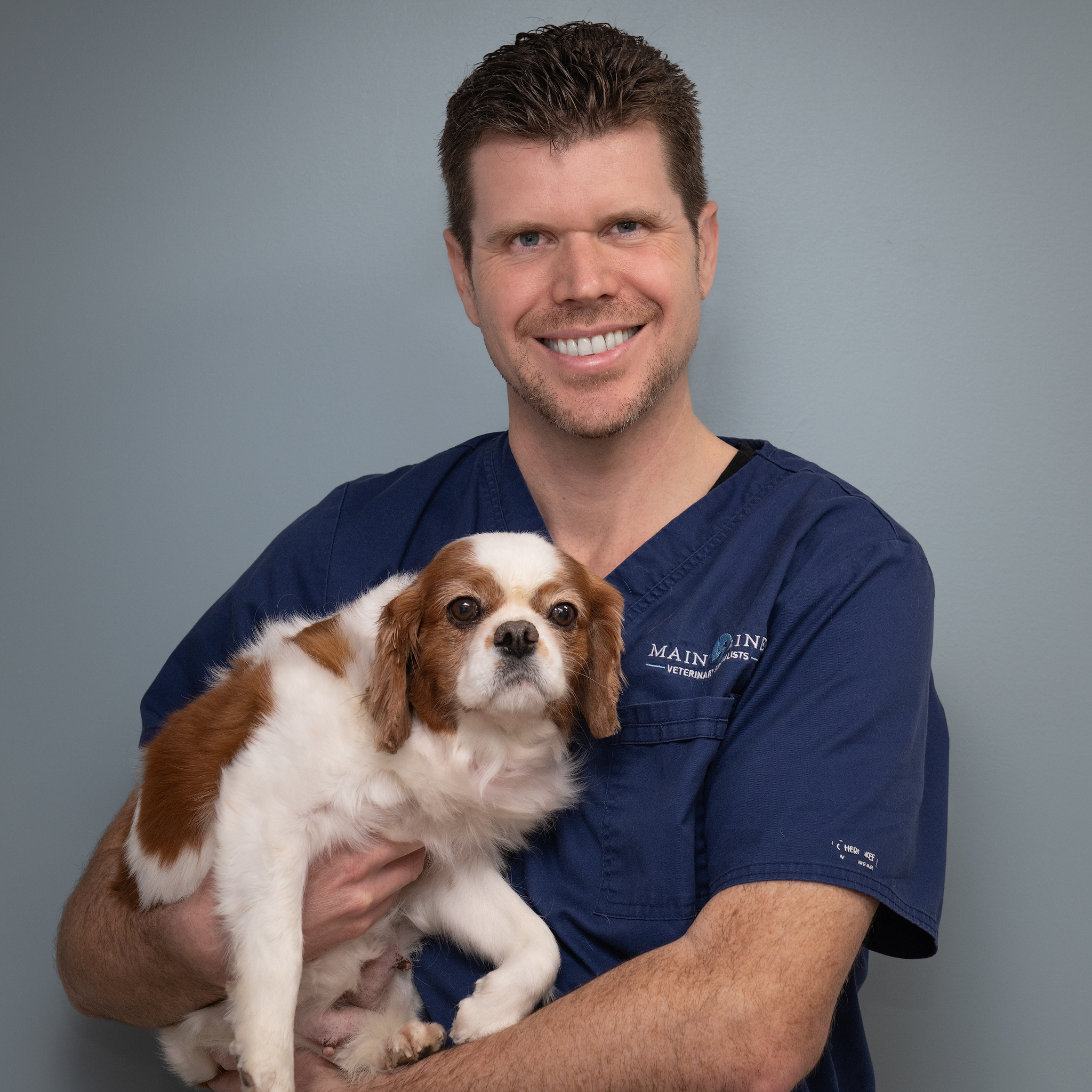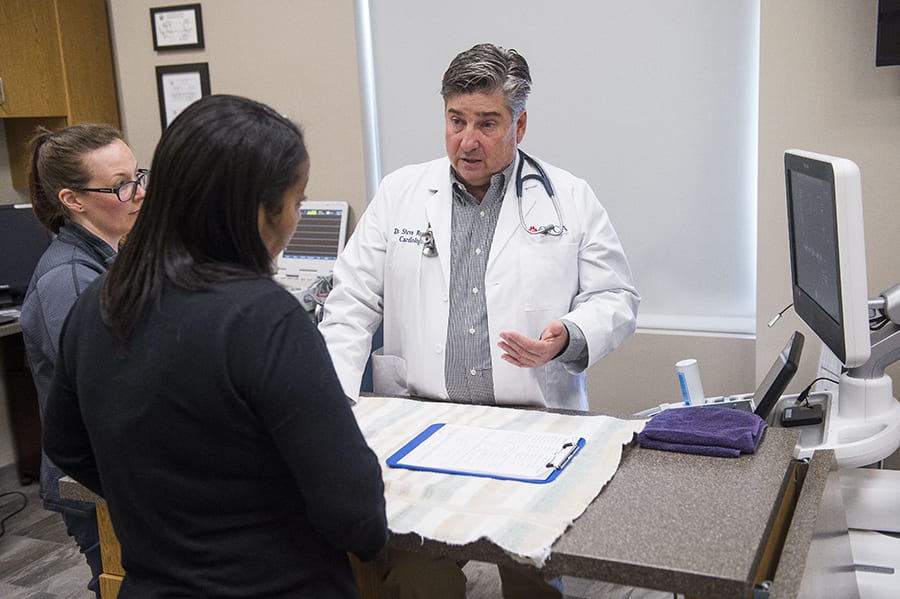The Role of Ultrasound and CT Check in Modern Veterinary Practices: Insights From Experienced Professionals
In modern veterinary methods, ultrasound and CT scans substantially enhance analysis capabilities. These imaging methods offer vital insights into animal wellness, assisting treatment choices. Experienced professionals identify the unique benefits of each modality. Ultrasound supplies real-time assessments, while CT checks provide detailed anatomical details. Comprehending their roles and applications increases essential concerns about their influence on person outcomes and the future of veterinary diagnostics. What understandings can be obtained from their combined usage?
Comprehending Ultrasound in Vet Medication
Ultrasound is an important diagnostic tool in vet medicine, offering a non-invasive technique to picture interior structures. This imaging method utilizes high-frequency audio waves to produce real-time photos of tissues and organs, permitting veterinarians to examine conditions without medical intervention. Usual applications include examining the heart, liver, kidneys, and reproductive body organs, along with keeping an eye on pregnancies.The procedure is relatively fast and can be executed in numerous settings, making it an easily accessible choice for veterinarians. Unlike radiography, ultrasound supplies thorough information regarding soft tissues and blood flow, which is important for accurate diagnoses.Veterinary experts rely upon ultrasound to spot problems such as lumps, cysts, and liquid build-up. Its ability to guide biopsies and other procedures better improves its utility in medical technique. By providing a reliable and safe method to check out interior composition, ultrasound has actually ended up being a foundation of modern vet diagnostics.
The Advantages of CT Checks for Animal Diagnostics
CT checks deal significant benefits in veterinary diagnostics by giving enhanced accuracy in determining internal problems (Cancer Veterinary Near Me). As a non-invasive imaging technique, they guarantee the safety and convenience of pets during evaluations. In enhancement, CT checks help with a thorough evaluation of interior frameworks, enabling more reliable therapy planning
Enhanced Diagnostic Accuracy
Advancements in imaging modern technology have substantially enhanced diagnostic accuracy in vet medication, particularly with making use of CT scans. These scans give comprehensive cross-sectional pictures of a pet's interior frameworks, permitting vets to recognize problems with accuracy. The high resolution and three-dimensional capabilities of CT imaging help with the discovery of problems such as lumps, fractures, and interior blood loss that may be missed out on with typical imaging methods. Furthermore, CT scans can help in pre-surgical planning by using a thorough view of physiological relationships. This degree of information not just enhances the precision of diagnoses but additionally aids in customizing effective therapy strategies. The combination of CT innovation into vet practices is transforming the landscape of pet healthcare, enhancing end results for clients.
Non-Invasive Imaging Technique
The intro of non-invasive imaging methods has changed animal diagnostics, with CT scans becoming a noticeable device in veterinary practices. These scans provide high-resolution, cross-sectional pictures of an animal's internal frameworks, allowing vets to examine complicated conditions without the need for intrusive treatments. The advantages of CT scans include their capacity to spot lumps, fractures, and internal bleeding with exceptional accuracy. Additionally, they assist in the examination of soft cells and body organs, enhancing diagnostic capacities. The speed of CT scanning enables fast decision-making, which is essential in emergency situation scenarios. By decreasing stress and anxiety and pain for the animal, CT scans add to a much more humane technique to diagnostics, inevitably boosting treatment results and advancing vet care.
Comprehensive Internal Analysis
A complete internal assessment is crucial for accurate medical diagnosis and reliable treatment in vet medication. CT checks offer considerable benefits in this respect, supplying comprehensive cross-sectional pictures of a pet's interior frameworks. This sophisticated imaging technique improves visualization of complicated physiological areas, enabling vets to identify problems such as lumps, cracks, and interior bleeding with higher accuracy. Furthermore, CT scans promote the analysis of conditions that may be testing to detect with standard methods. The rate and precision of CT imaging also add to prompt treatments, enhancing person results. As vet techniques significantly integrate CT modern technology, the benefits of extensive inner analyses end up being apparent, strengthening the importance of this tool in modern veterinary diagnostics.
Contrasting Ultrasound and CT Imaging Techniques
While both ultrasound and CT imaging offer necessary duties in veterinary diagnostics, each technique supplies distinctive advantages and limitations that can affect professional decision-making. Ultrasound is especially valued for its real-time imaging capabilities, allowing vets to observe dynamic physiological processes. This method is non-invasive, mobile, and does not include ionizing radiation, making it a safer choice for both pets and clinicians. Ultrasound might have constraints in picturing certain physiological structures or deep tissues.Conversely, CT imaging supplies comprehensive cross-sectional sights of the body, enabling for accurate localization of problems. It stands out in assessing facility organs and frameworks, particularly in the thorax and abdominal area. CT scans require sedation or anesthetic in numerous instances and include direct exposure to ionizing radiation. Ultimately, the choice in between ultrasound and CT depends on the particular professional situation, the location of interest, and the urgency of the analysis needs.
Case Studies: Effective Medical Diagnoses Via Imaging
Study illustrate the substantial renovations in diagnostic accuracy accomplished via sophisticated imaging innovations like ultrasound and CT scans in veterinary techniques. These developments not just enhance the detection of numerous problems yet also assist in prompt and reliable treatment plans. Examining specific situations can highlight the transformative influence of these imaging strategies on vet medicine.
Analysis Accuracy Improvements

Imaging Modern Technology Advancements
As veterinary imaging modern technology remains to advance, its influence on diagnostic capacities comes to be progressively obvious. Current instance researches highlight the effective application of sophisticated ultrasound and CT check strategies in identifying complex conditions. For example, a veterinary facility made use of high-resolution CT scans to identify an unusual form of lung cancer in a dog, which conventional imaging had actually missed. An ultrasound evaluation disclosed a stomach mass in a pet cat, prompting prompt medical treatment and a positive end result. These improvements not just improve diagnostic precision however additionally allow veterinarians to develop targeted treatment plans. By leveraging cutting-edge imaging modern technologies, veterinary specialists are substantially boosting person treatment, leading to more reliable management of various wellness conditions in pets.
The Duty of Imaging in Emergency Veterinary Treatment
Imaging plays an essential role in emergency vet care, supplying veterinarians with vital info required to make quick, enlightened choices. In immediate scenarios, methods like ultrasound and CT scans make it possible for specialists to swiftly analyze an animal's internal frameworks, identifying critical problems such as inner blood loss, fractures, or body organ problems. These imaging methods enable real-time evaluations, promoting prompt interventions that can be life-saving. Ultrasound is indispensable for reviewing soft cells injuries and conditions like fluid buildup, while CT scans offer in-depth photos of complex anatomical structures, vital for detecting injury cases. The speed and accuracy of these imaging techniques improve the veterinarian's ability to develop reliable therapy plans, making sure the very best possible results for their individuals. Consequently, the integration of sophisticated imaging modern technologies right into emergency veterinary practices is not just beneficial yet increasingly needed, as it boosts analysis abilities and improves general pet care throughout crucial minutes.
Training and Proficiency in Veterinary Imaging
Although innovative imaging methods such as ultrasound and CT scans are vital for reliable vet treatment, the effective execution of these innovations heavily depends upon the training and competence of veterinary professionals. Efficient use imaging devices calls for extensive knowledge of anatomy, pathology, and the concepts underlying each modality. Veterinary professionals have to undergo specialized training to precisely translate imaging outcomes, which is essential for diagnosing conditions and intending treatment.Certifications and continuing education in veterinary imaging improve the skills of experts, allowing them to remain upgraded with technological innovations. Collaboration between veterinarians and radiologists usually causes boosted diagnostic accuracy, as experts can supply understandings into complex cases. On top of that, practical experience in dealing with imaging tools promotes confidence in its application. Eventually, the quality of vet imaging services is straight her latest blog correlated to the degree of training and knowledge possessed by the professionals making use of these necessary analysis tools.
Future Trends in Diagnostic Imaging for Animals
With the rapid developments in innovation, veterinary analysis imaging is positioned for substantial advancement in the coming years. Arising trends indicate a change in the direction of more portable and accessible imaging techniques, such as handheld ultrasound gadgets, which can improve field diagnostics. In addition, the combination of expert system is expected to change photo evaluation, permitting quicker and extra precise interpretations of results.Moreover, developments in 3D imaging methods and calculated tomography will give veterinarians with even more complete sights of animal anatomy, leading to improved therapy strategies. Online fact innovation might also contribute in medical preparation and education and learning, providing vets an unique point of view on complicated cases.As telemedicine remains to expand, remote assessments promoted by analysis imaging will come to be much more typical, permitting experts to aid family doctors in real-time. On the whole, these fads are set to enhance the performance and effectiveness of veterinary care, inevitably improving pet outcomes.
Often Asked Inquiries
Just How Much Do Ultrasound and CT Scans Expense in Veterinary Facilities?
The prices of ultrasound and CT scans in vet facilities typically vary from $300 to $1,500, relying on factors such as location, clinic kind, and certain treatments needed for the animal's medical diagnosis and therapy.

Exist Any Dangers Related To Ultrasound and CT Scans for Pet Dogs?
Ultrasound and CT scans normally posture marginal dangers to pet dogs. Possible concerns consist of sedation responses and direct exposure to anesthetics. Vets thoroughly assess each situation to reduce any kind of dangers related to these diagnostic treatments
How Long Do Ultrasound and CT Procedures Generally Take?
Ultrasound treatments typically take about 30 minutes here are the findings to an hour, relying on the complexity. CT scans, being more thorough, typically call for 30 minutes to 90 mins, consisting of preparation and recuperation time for the family pet.
Can All Veterinarians Perform Ultrasounds and CT Scans?
Not all vets can perform ultrasounds and CT scans. Specialized training and certification are often needed to assure competency in these sophisticated imaging methods, which might restrict their availability to vets with extra credentials and resources.
What Kinds Of Animals Profit A Lot Of From These Imaging Techniques?
Particular pet types, specifically pet cats and pets, benefit substantially from ultrasound and CT scans. These imaging techniques enhance diagnostic accuracy for problems like growths, interior injuries, and body organ problems, causing better therapy end results and patient treatment. The high resolution and three-dimensional capacities of CT imaging promote the discovery of problems Discover More such as growths, cracks, and inner blood loss that may be missed with traditional imaging techniques. Instance researches highlight the substantial renovations in analysis precision achieved with sophisticated imaging innovations like ultrasound and CT scans in veterinary techniques. Improving diagnostic precision in vet methods has been significantly helped by developments in imaging innovations such as ultrasound and CT scans. Advanced imaging strategies such as ultrasound and CT scans are essential for effective vet care, the effective execution of these innovations heavily depends on the training and proficiency of vet experts. Veterinary professionals have to go through customized training to precisely interpret imaging outcomes, which is important for identifying problems and preparing treatment.Certifications and continuing education and learning in veterinary imaging boost the abilities of specialists, allowing them to stay updated with technical developments.